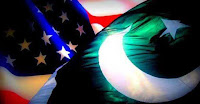If one looks at the history of power sector in Pakistan, a
few points are clear. These include: 1) a myth that the country has been
persistently suffering due to the shortage of energy products, 2) the successive
power policies have been have been introduced to serve the interest of local
and overseas investors, 3) blatant theft of electricity and gas has been going
on with the connivance of employees of utility companies, 4) regulatory
authorities have failed in protecting the interest of consumers and remained
subservient to the incumbent governments.
Energy shortage
Pakistan is blessed with an enormous potential of hydel
power generation. According to the experts Mighty River Indus along has the
potential to generate more than 40,000MW electricity per annum. Another
10,000MW electricity per annum can be generated from smaller hydel plants (run
of the river type facilities which does not require construction of
dams/reservoirs. In addition to that 50,000MW electricity can be produced
annually from Thar coal. However, at present total hydel generation is around
8,000MW, which goes down when water level drops in dams. Thermal power plants
(mostly owned and operated by the private) have the lion’s share in the total
generation. The share of coal and nuclear power plants in the total electricity
generated has remained minuscule. Though, a lot is being talked about changing
the energy mix and curtailing use of gas for power generation, a little success
has been achieved.
Serving vested Interest
Major hydel power generation facilities, i.e. Warsak,
Mangla, Tarbella and Ghazi Brotha are located in the northen parts of the
country and cater to the needs to KPK and upper Punjab. Karachi is hub of
trading and industrial hub and it is totally dependent on thermal power
generation. The city has 10% of the total population of the country but gets
nothing from low cost electricity generated from hydel power plants. To be
precise, K-Electric supplies electricity to some parts of Sindh and
Baluchistan. If transmission of hydel electricity to Karachi is difficult or
uneconomical, quota allocation of gas to K-electric should be doubled. Karachi
is surviving on self generated electricity, the city has a latent demand of
5,000MW, whereas K-Electric is capable of meeting only half of this demand. One
can still recall that in the early nineties E-Electric used to export
electricity to Punjab. HUBCO was constructed to primarily meet Karachi’s
demand, but it was ‘hijacked’ by WAPDA for meeting Punjab’s demand.
Blatant Theft
Blatant theft of electricity and gas been been going on for
ages with the connivance of utilities. On top of all some of the parts of
Pakistan are provided free of cost electricity. One may recall that at one time
the average T&D losses of electric utilities were as high as 40%. Lately,
gas UFG, which mostly comprise of theft hover a little less than 10%. On top of
this, utility companies carry the load of billions of rupees of receivables,
the probability of recovery is very low. According to some analysts, if
K-Elecric pays off its outstanding dues, SSGC will be able to pay off almost
all the payable amount to E&P companies. Containing theft or recovering
outstanding dues does not require any rocket science, but a firm commitment.
However, utilities fail completely helpless because of the pressure of
political and linguistic groups. It is also necessary to put on record that
utilities don’t provide connections, taking refuge behind non-availability of
electricity/gas, but are prompt in providing ‘temporary connections, which are
often without meters. Analysts term this ‘offical kunda’.
Regulatory Authorities
The Government of Pakistan (GoP) initiated the process of
liberalization, deregulation and privatization. Under this policy, the private
sector was encouraged to establish industries, which remained the exclusive
domain of the state for decades and it was also offered the stake in state
owned enterprises along with management control. Prior to that the World Bank has
refused to lend more money to WAPDA and the shift in policy gave birth to HUBCO
and other IPPs.
IMF Recipe
Many analysts have the consensus that the International
Monetary Fund (IMF) is the lender of last resort, but its recipes are not aimed
at enabling any country to ‘stand on its own feet.’ Often the country is
trapped in a vicious cycle of borrowing. However, the advantage is that if the
country succeeds in developing its own home grown plan and meeting the
condition imposed by the IMF, it may overcome the balance of payment
crisis.
Pakistan has a long history of remaining under the IMF
support program. In one of the latest country report, the Fund has once again
highlighted the need to introduce structural reforms for the power sector.
These weaknesses identified are: 1) the persistence of circular debt, 2) DISCOs
still operating under the state control, 3) high T&D losses, 4) failure to
follow corporate governance and 5) lack of the mechanism for passing on input
cost adjustments to end consumers.
Emphasizing US$55 billion in planned investments as a part
of CPEC, the Fund anticipates improved economic activity made up of 19 Chinese
sponsored power sector investments (US$17.7 billion) and non-CPEC energy
projects (US$25.4 billion). Mode of financing for energy projects has been
bifurcated into: 1) direct borrowing and investment from Chinese financial
institutions, and 2) financing of projects by private domestic sponsors as well
as government backed borrowing from multilateral lenders.
A detailed analysis of the power sector shows: 1) the
country has enormous resources to produce low cost electricity, 2) if pilferage
is contained cash flow of DISCOs will improve and 3) circular debt issue will
be resolved. Appropriately managed conventional sources of power generation can
help in meeting the electricity demand and there may not be an urgent need to
invest in alternative sources of power generation.





